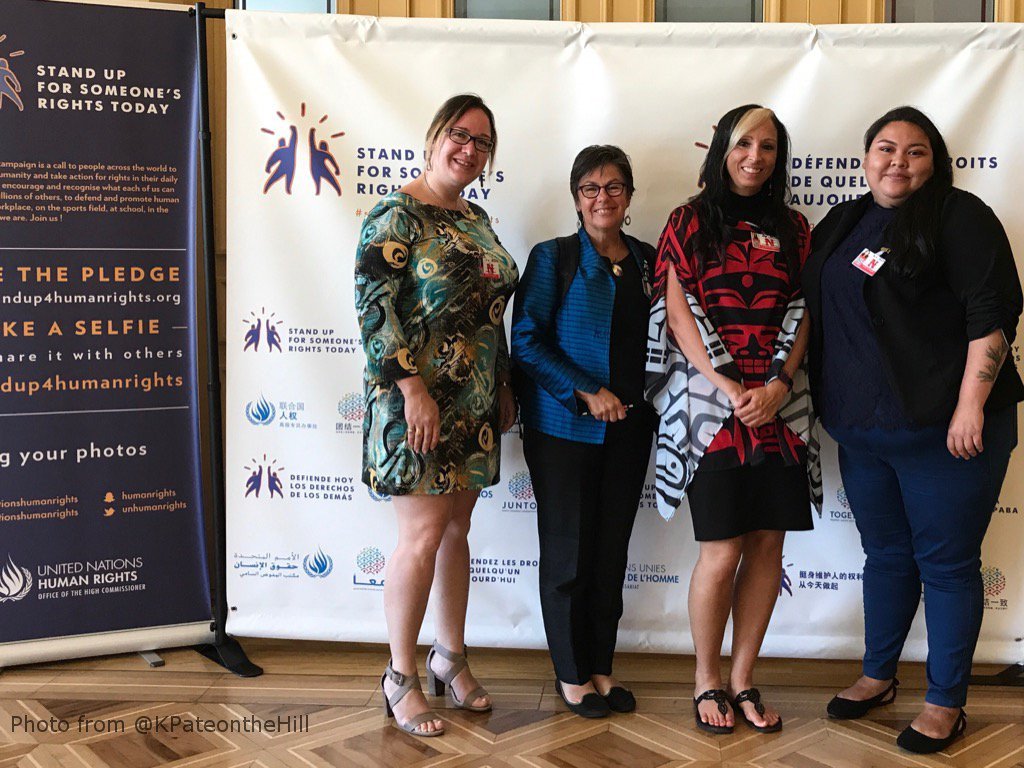*Originally published in Lawyer’s Daily on November 6, 2017 (edited to include links) The integrity of Canada’s policing and corrections system has been called into disrepute from the sexualized violence committed by its police and corrections officers against Indigenous women and girls, female prisoners and even their own female colleagues. Recently, officials at Edmonton’s maximum…
Year: 2017
NAFTA 2.0 – Time to Get it Right or Kill It
*Originally published in Lawyer’s Daily on October 10, 2017 There is a long list of items that U.S. President Donald Trump has put on his “to kill” list, including Obamacare, Planned Parenthood, the Department of Education, immigration and most recently, NAFTA. Trump called the North American Free Trade Agreement the “worst trade deal ever made”…
Continue reading…about NAFTA 2.0 – Time to Get it Right or Kill It
Canada’s Ongoing Racial Discrimination Against Indigenous Women and Children Discussed at United Nations

(Photo by NWAC of ONWA, CAEFS, myself and NWAC at UN) On August 14th and 15th, 2017, Canada appeared before the United Nations (UN) Committee for the Elimination of Racial Discrimination (CERD) to account for its efforts to eliminate racial discrimination in Canada….
Indigenous Inquiry [into murdered and missing Indigenous women and girls] a Slow Motion Implosion
*(Originally published in the Lawyer’s Daily on August 8, 2017- edited) When the draft terms of reference of the National Inquiry into Murdered and Missing Indigenous Women and Girls were leaked to the media in the summer of 2016, many families, advocates, experts and communities were upset that there would be no investigation of the…
Why is Trudeau Government Opposing Charter Equality for Indigenous Women?
(Originally published in Lawyer’s Daily on June 21, 2017 – edited) Shortly after Confederation, the federal government used its jurisdictional powers over “Indians and lands reserved for the Indians” in s. 91(24) of the Constitution Act 1867, to enact the Indian Act, 1876 — making it nearly as old as “Canada” itself. For well over…
Continue reading…about Why is Trudeau Government Opposing Charter Equality for Indigenous Women?
Bill S-3 Amendments to the Indian Act and the Never-Ending Battle for Equality for Indigenous Women
The Parliamentary Standing Committee on Indigenous and Northern Affairs (INAN) is currently studying Bill S-3 An Act to Amend the Indian Act (elimination of sex-based inequities). As its title suggests, this bill should eliminate the remaining gender discrimination contained within the Indian Act’s registration and membership provisions – but it does not. The Indian Act’s…
Inquiry into Murdered and Missing Indigenous Women and Girls Fatally Flawed
(Originally published in Lawyer’s Daily on May 15, 2017) It looks like those who advocated for the long-awaited national inquiry into murdered and missing indigenous women and girls will be waiting a little while longer. Despite the promise from Liberal Prime Minister Justin Trudeau that the national inquiry would be his first order of business,…
Continue reading…about Inquiry into Murdered and Missing Indigenous Women and Girls Fatally Flawed
Nation to Nation Relations Need Repeal of Paternalistic Laws
(Originally published in Lawyer’s Daily on April 17, 2017) Prime Minister Justin Trudeau swept the Liberals into power on Oct.19, 2015, with the support of Indigenous peoples who voted in record numbers. Trudeau’s election platform consisted of core promises made to the Chiefs in Assembly on July 7, 2015, which would include the review and…
Continue reading…about Nation to Nation Relations Need Repeal of Paternalistic Laws
New Government, Old Ways: Racism is STILL Killing Our People – Updated
“Millions promised for Indigenous kids is subsidizing mining companies, internal documents show”. This was the headline on March 2, 2017 which made me and many other people very angry. https://www.pressprogress.ca/millions_promised_for_indigenous_kids_is_subsidizing_mining_companies_internal_documents_show First of all, the Minister of Indigenous Affairs can’t be trusted to tell the truth and secondly, thousands of First Nation children end up in…
Continue reading…about New Government, Old Ways: Racism is STILL Killing Our People – Updated